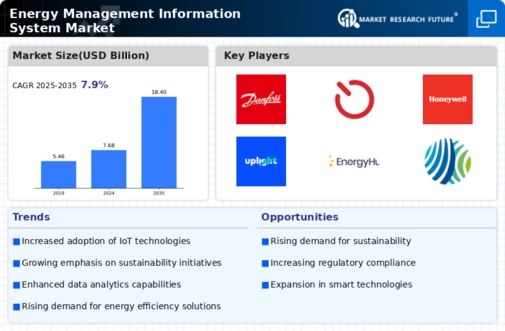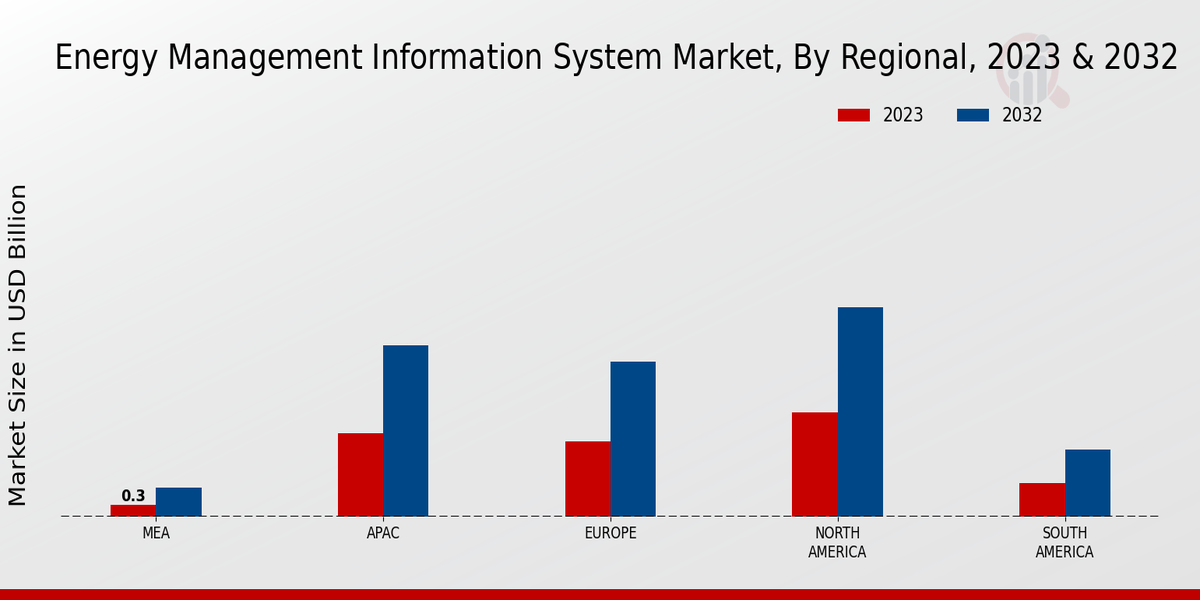Market Growth Projections
The Global Energy Management Information System Market Industry is projected to experience robust growth in the coming years. With a compound annual growth rate (CAGR) of 8.29% anticipated from 2025 to 2035, the market is set to expand significantly. By 2035, the market is expected to reach 18.4 USD Billion, reflecting the increasing recognition of the importance of energy management in various sectors. This growth trajectory suggests a strong demand for innovative solutions that can address the evolving challenges of energy consumption and sustainability, positioning energy management systems as critical components of future energy strategies.
Technological Advancements
Technological advancements significantly influence the Global Energy Management Information System Market Industry. Innovations in IoT, big data analytics, and artificial intelligence are transforming how organizations manage energy consumption. These technologies enable real-time data collection and analysis, facilitating more informed decision-making regarding energy usage. As a result, companies can identify inefficiencies and implement corrective measures swiftly. The integration of smart meters and automated controls enhances the effectiveness of energy management systems, making them indispensable for organizations aiming to optimize their energy strategies. This trend is expected to contribute to the market's growth trajectory.
Increased Focus on Sustainability
The Global Energy Management Information System Market Industry is witnessing an increased focus on sustainability among businesses. As stakeholders demand greater transparency regarding environmental impact, organizations are compelled to adopt energy management systems that provide detailed insights into energy consumption patterns. This shift is not merely a trend but a strategic imperative, as companies recognize that sustainable practices can enhance brand reputation and customer loyalty. By 2035, the market is anticipated to expand to 18.4 USD Billion, reflecting the growing integration of sustainability into corporate strategies and the corresponding demand for effective energy management solutions.
Rising Demand for Energy Efficiency
The Global Energy Management Information System Market Industry experiences a notable surge in demand for energy efficiency solutions. As organizations increasingly prioritize sustainability, the adoption of energy management systems becomes essential. In 2024, the market is projected to reach 7.68 USD Billion, driven by the need for real-time monitoring and optimization of energy consumption. Companies are leveraging these systems to reduce operational costs and enhance their environmental footprint. This trend is particularly evident in sectors such as manufacturing and commercial real estate, where energy efficiency measures can lead to substantial savings and improved regulatory compliance.
Government Initiatives and Regulations
Government initiatives play a pivotal role in shaping the Global Energy Management Information System Market Industry. Various countries are implementing stringent regulations aimed at reducing carbon emissions and promoting renewable energy sources. For instance, policies that mandate energy audits and reporting requirements compel organizations to adopt energy management systems. These regulations not only drive market growth but also encourage innovation in energy management technologies. As governments worldwide set ambitious targets for carbon neutrality, the demand for comprehensive energy management solutions is likely to escalate, further propelling the market forward.
Growing Adoption of Renewable Energy Sources
The growing adoption of renewable energy sources is a significant driver of the Global Energy Management Information System Market Industry. As more organizations transition to solar, wind, and other renewable energy technologies, the complexity of managing energy resources increases. Energy management systems provide the necessary tools to monitor and optimize the use of renewable energy, ensuring that organizations can maximize their investments in these technologies. This trend is likely to accelerate as global energy policies increasingly favor renewable sources, thereby enhancing the demand for sophisticated energy management solutions that can integrate diverse energy inputs.

















